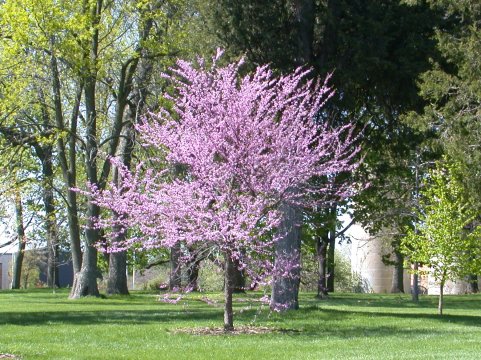

Cercis canadensis - (image 1 of 6)
Taxonomy
Family: Caesalpiniaceae (Often treated as part of the Fabaceae)
Habitat
Woodlands.
Associates
Asimina triloba, Campanula americana, Celtis occidentalis, Eupatorium rugosum, Fraxinus americana, Geranium maculatum, Gleditsia triacanthos, Gymnocladus dioica, Lindera benzoin, Parthenocissus quinquefolia, Polygonum virginianum, Prunus serotina, Quercus muhlenbergii, Quercus rubra, Rhus radicans, Staphylea trifolia, Tilia americana, Ulmus americana, Xanthoxylum americanum.
Distribution
CT and southern NY west to southern MI, IA, and eastern NE, south to FL and northern Mexico.
Morphology
Small deciduous tree to 12 m. Leaves alternate, heart-shaped, simple, entire, palmately veined. The showy, pea-like, magenta-pink flowers are followed by pea-like pods to 10 cm long.
Notes
Flowers late June into late August
Wetland indicator: Obligate
A popular landscape tree and perhaps overused in some areas. In addition to the attractive spring floral display, this tree normally has good yellow fall foliage. Prone to anthracnose infection. Does well in part shade.
References
Dirr, Michael A. 1998. Manual of Woody Landscape Plants:
Their Identification, Ornamental Characteristics, Culture, Propagation and Uses.
5th ed. Champaign, Illiois: Stipes Publishing L.L.C.
Gleason, Henry A. and A. Cronquist. 1991. Manual of Vascular Plants of
Northeastern United States and Adjacent Canada. Second Ed.
The New York Botanical Garden. Bronx, NY
Swink, F. and G. Wilhelm. 1994. Plants of the Chicago Region.
Indiana Academy of Science. The Morton Arboretum. Lisle, Illinois.
|
Michael Hough © 2004 |